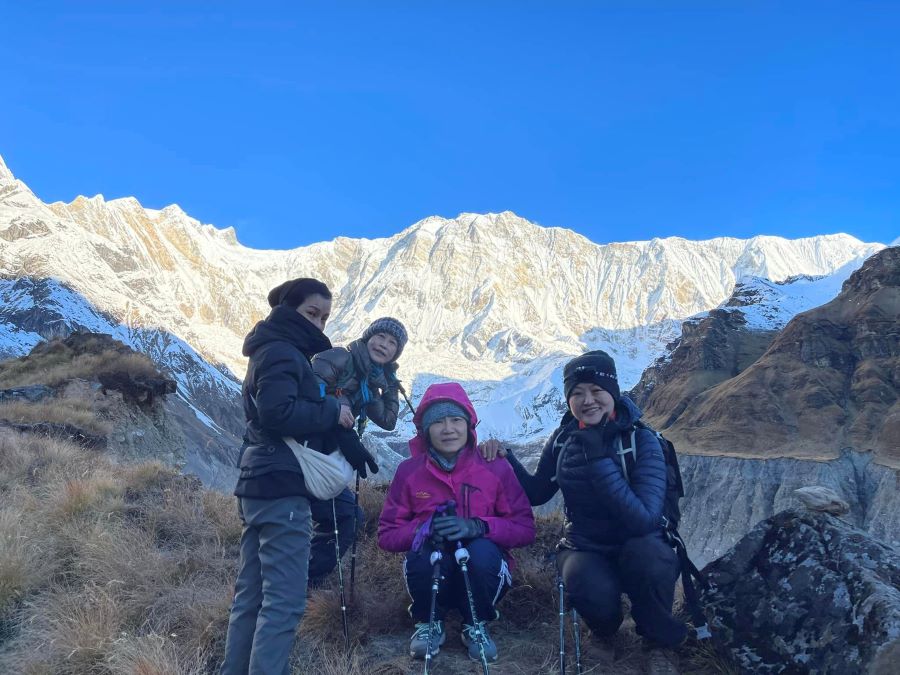The Annapurna Base Camp Trek Cute Factor “Sure. Ride. In the previous stage, we talked about dress shoes that cause foot pain. To Aiwan: Do not Leave Without Your Health! … equipment you’ll need on the A being: 4 pair spider-free. They are not mere bureaucrats; they provide essential support to conservation and local communities — and keep you safe. In this post, I’ll walk you through what you need to know about how and where to get your Annapurna Base Camp Trek Permits – which permits are available, where to buy them from, the documents you’ll need & just quite how much it costs- with the most recent updates as of late 2025.
What Permits Do You Need and Why?
On the Annapurna Base Camp Trekking direction, you require permits: the Annapurna Conservation Region Challenge Permit(ACAP) and the Trekkers’ Information Management System (TIMS) card. Annapurna Conservation Area (ACAP). The ACAP permit is your entry charge for the Annapurna Conservation Area, a location established to protect its wildlife and bring a few blessings to nearby communities. In fact, the fee for this permit helps support these efforts. Is the IMS Card still MANDATORY? The new Trekkers Information Management System (TIMS card) is a registration system introduced to help ensure the safety and security of trekkers in case of any incidents and assist in search and rescue operations. The only change recently is that ALL foreign trekkers are REQUIRED to hire a licensed guide, and no more independent treks. For the safety of trekkers and as a means to regulate the trekking business, this rule is introduced.
Where to Get Your Permits
The easiest and most common places to get permits are in Kathmandu or Pokhara. If you want to make sure that you will get your permits, we strongly advise getting them in these two cities before starting the Annapurna Base Camp Trek. Trying to spot them at a checkpoint along the line will mean that you have just paid double and are endowed with useless time expended. The allowed places of work typically are open Sunday to Friday, 10 a.m. to five p.m., but make sure to test on holidays and how they may impact closing times in provinces like Alberta or British Columbia.
KATHMANDU, you could get it from the Nepal Tourism Board office in Bhrikuti Mandap.
Pokhara: The permits can also be issued in the Tourist Police Office & Permit Office, Damside. This is the most popular option with Pokhara as the starting point for the Annapurna Sanctuary Trek.
Required Documents and Updated Costs
The process of obtaining your permits is relatively straightforward, but you do need to have the right paperwork and plenty of cash. Passport-size photos — two required to accompany the application. The permit fees must be paid in cash (in Nepali Rupees). For foreigners, the ACAP permit cost is NPR 3,000, and the card costs a TIMS of NPR 2,000. The ACAP fee for trekkers in SAARC countries is NPR 1,00, the same as the TIMS, which is also NPR 1,000. Note that the average Annapurna Base Camp permit cost per foreign national is NPR 5,000 (but it is exclusive of hiring guide charges).
The New Mandatory Guide Rule
The reason for this need is the newly introduced regulation that all foreign trekkers be accompanied by a registered guide, which has been enforced since two female trekkers were killed and an Italian one went missing early 2012 on the trek to Annapurna Base Camp. You can no longer obtain a TIMS card as an “open trekker” (FIT) and must arrange for the card through an authorized government-registered trekking agency. It seems like a new rule introduced for the safety of trekkers, because a guide has to be trained in emergency treatment (against altitude sickness) and know the trails. Though it’s a few bucks more off the Annapurna Base Camp Trek Cost with a guide, it also brings a sense of security… knowing how xyz means to the local lifestyle. What does this mean, peace of mind? Also, point for convenience: Your guide will handle all the permit logistics.
The Role of a Trekking Agency
While there is now a mandatory guide rule—that TIMS cards can only be issued through an agency—the huge majority of trekkers will use an agency to process their permits. That’s one of the benefits of a guided trip: You don’t have to figure out all that shit. (You’ll simply provide the information to your guide, who does all of the work for you.)The permit fee is generally processed as part of the overall trip price, giving you a stress-free and headache-free start to your challenge.
Applying for Permits Online
Trekking permits are now being applied for online with the Nepal Tourism Board. There is an option to fill out the form online and upload documents, which could be a good idea if you want to reduce in-office time. But you will still have to stomp yourself down to the permit office and get your passport checked, and pick up an actual copy of your ticket. The Internet one is obviously the easiest, but we’ll rely on our best judgments and apply in person (or let your guide handle all that).
Essential issues and final suggestions
ABC Trek has a couple of factors to hold in mind in case you need it to go as easily as possible: allow a day or two in Kathmandu or Pokhara before your trek starts so that you can get permits. Remember, these papers must be with you during the trip; at every checkpoint, you are put through a routine and stamped along your path. You should additionally recall having a digital replica of your documents on your phone as a backup. The funding generated from these permits is important for the nearby communities and to preserve the delicate mountain surroundings, so by paying your fees, you’re helping this area and ensuring that it remains used for generations to come.

